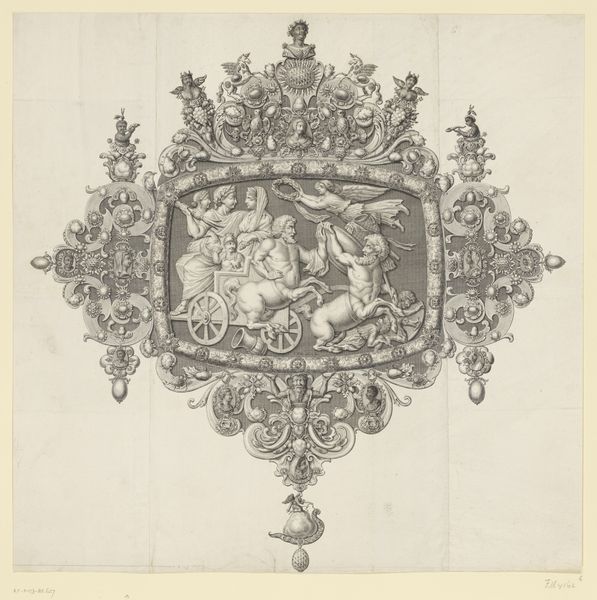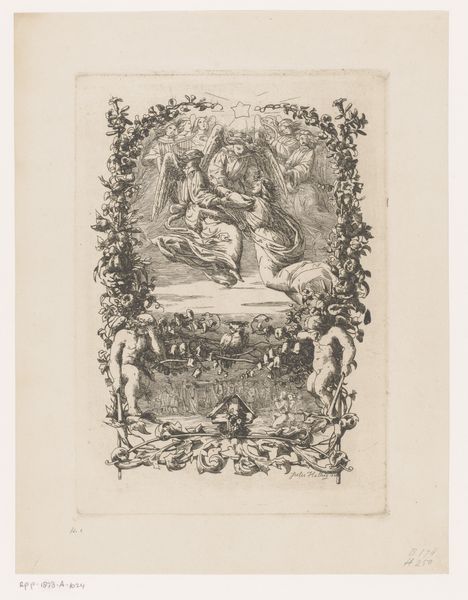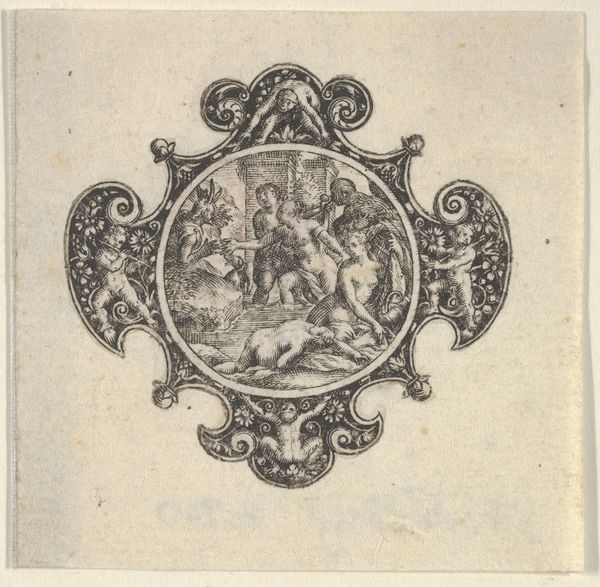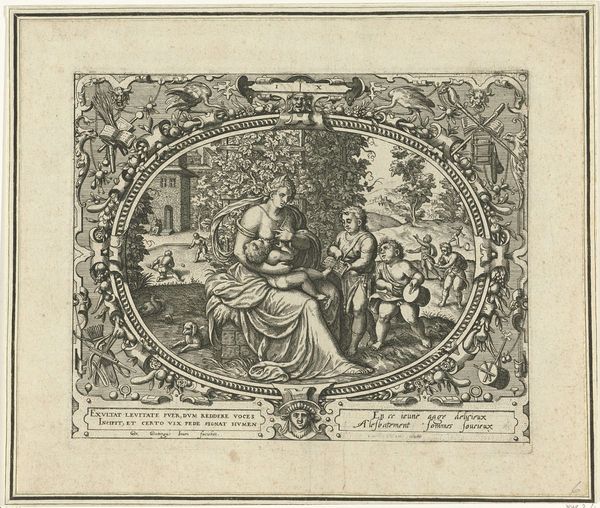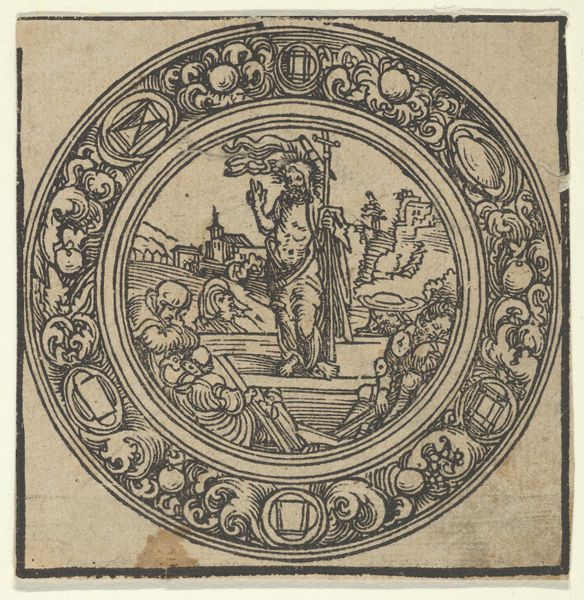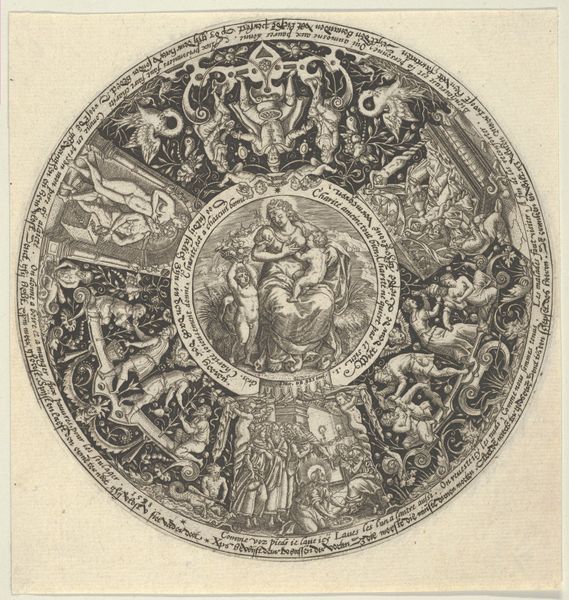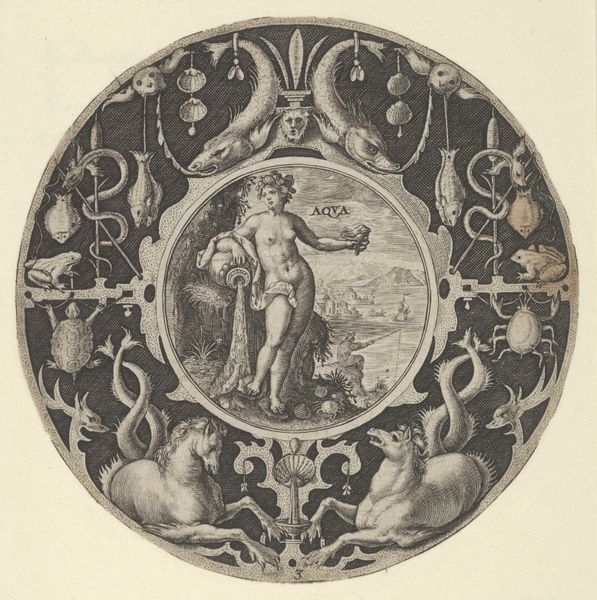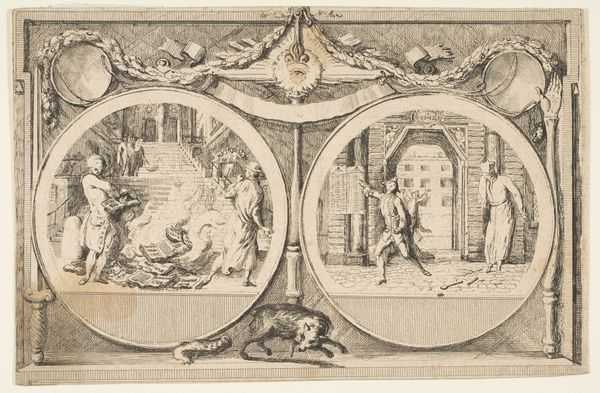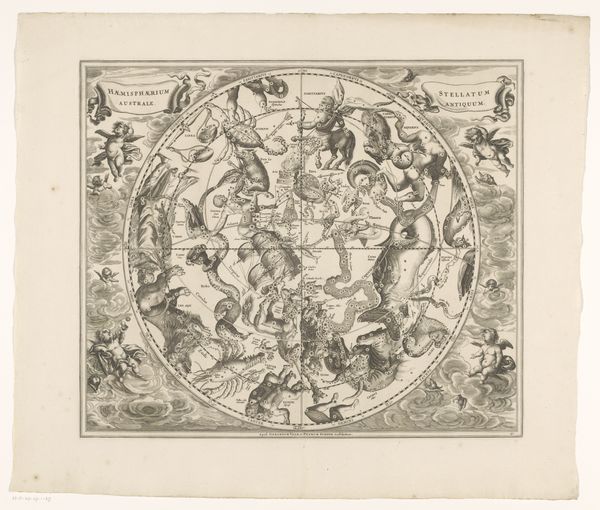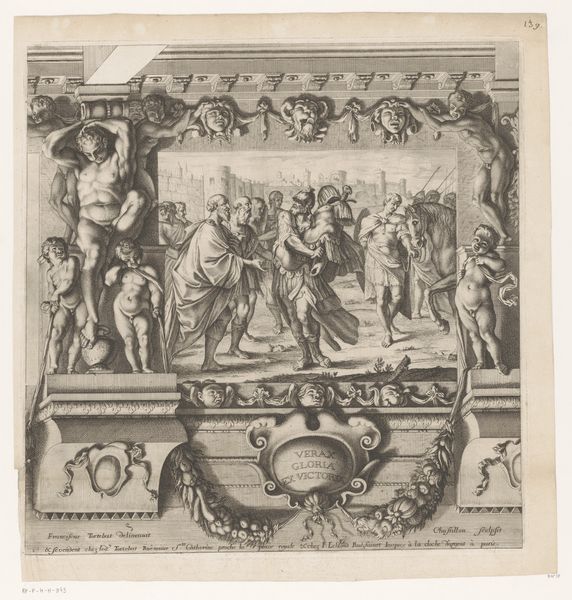
drawing, print, engraving
#
drawing
#
animal
# print
#
mannerism
#
female-nude
#
history-painting
#
engraving
#
male-nude
Dimensions: Sheet: 2 1/2 × 2 9/16 in. (6.4 × 6.5 cm)
Copyright: Public Domain
Editor: This engraving by Johann Theodor de Bry, titled "Sardanapal in the Bath," was made sometime between 1576 and 1623. The frenetic energy in this domestic scene is compelling. What social commentary might be present within the image? Curator: An interesting question. Considering this was produced during a time of significant social and political upheaval in Europe, especially surrounding ideas of monarchy and power, the portrayal of Sardanapal, who was an Assyrian King known for decadence and ruin, is telling. Notice the grotesque figures, both human and animal, surrounding the central figure. Editor: Yes, that elaborate, grotesque border almost suffocates the main scene! Is it saying something about the context in which this scene existed, beyond just a history painting? Curator: Precisely. It acts as a frame to contextualize Sardanapal’s behavior. Look closely – what do you see these figures *doing* to him? Editor: Well, some seem to be washing or bathing him, but there’s a cruelty to their ministrations. It’s not a loving, caring scene; instead, there’s a tension. What purpose would this piece serve? To depict something like cruelty being masked by normal customs like bathing? Curator: Exactly! Circulated in print form, works like these were incredibly powerful. They served as a means to distribute propaganda and offer criticisms veiled in historical narrative to a broader public that included learned audiences. They acted as political mirrors, didn't they? This print participates in the longstanding tradition of cautionary tales warning against despots. It comments as much on De Bry's own society as it does on ancient Assyria, suggesting the instability of authority, maybe even advocating for alternatives. Editor: So, it’s not just about depicting history; it’s about critiquing contemporary power structures through historical analogy? Thank you, I’ll never look at historical prints the same way again! Curator: It is about the active role of artists in critiquing or bolstering the norms of the artist's moment! That’s the exciting part of history of art: there’s so much that these images illuminate.
Comments
No comments
Be the first to comment and join the conversation on the ultimate creative platform.

